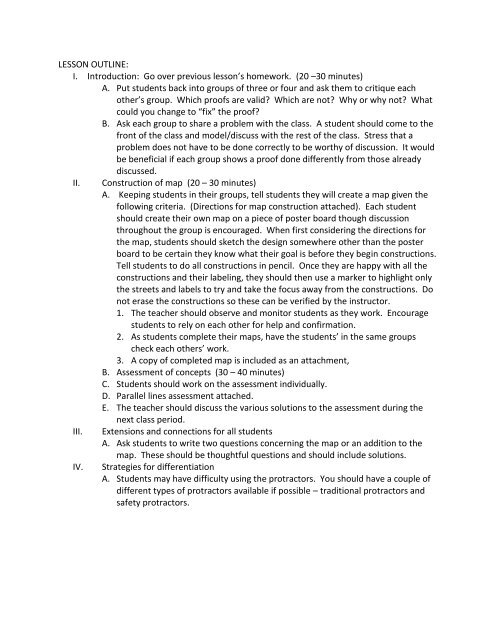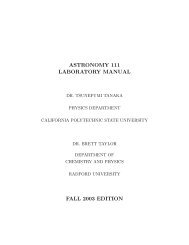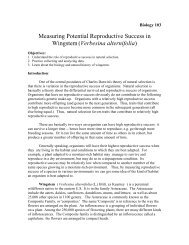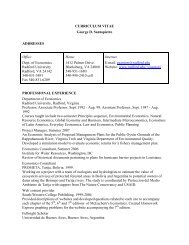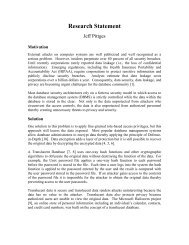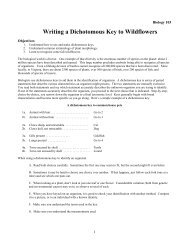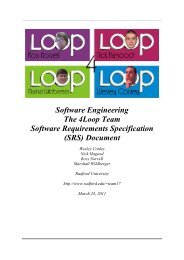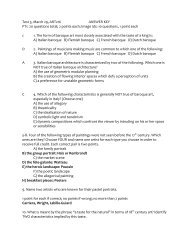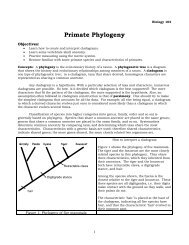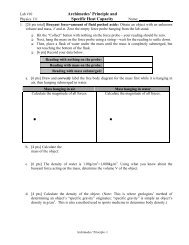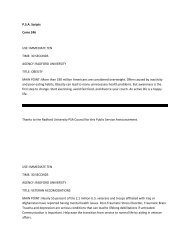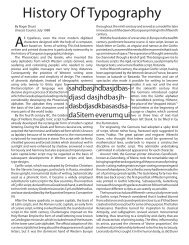Parallel Lines Cut by a Transversal
Parallel Lines Cut by a Transversal
Parallel Lines Cut by a Transversal
Create successful ePaper yourself
Turn your PDF publications into a flip-book with our unique Google optimized e-Paper software.
LESSON OUTLINE:<br />
I. Introduction: Go over previous lesson’s homework. (20 –30 minutes)<br />
A. Put students back into groups of three or four and ask them to critique each<br />
other’s group. Which proofs are valid? Which are not? Why or why not? What<br />
could you change to “fix” the proof?<br />
B. Ask each group to share a problem with the class. A student should come to the<br />
front of the class and model/discuss with the rest of the class. Stress that a<br />
problem does not have to be done correctly to be worthy of discussion. It would<br />
be beneficial if each group shows a proof done differently from those already<br />
discussed.<br />
II. Construction of map (20 – 30 minutes)<br />
A. Keeping students in their groups, tell students they will create a map given the<br />
following criteria. (Directions for map construction attached). Each student<br />
should create their own map on a piece of poster board though discussion<br />
throughout the group is encouraged. When first considering the directions for<br />
the map, students should sketch the design somewhere other than the poster<br />
board to be certain they know what their goal is before they begin constructions.<br />
Tell students to do all constructions in pencil. Once they are happy with all the<br />
constructions and their labeling, they should then use a marker to highlight only<br />
the streets and labels to try and take the focus away from the constructions. Do<br />
not erase the constructions so these can be verified <strong>by</strong> the instructor.<br />
1. The teacher should observe and monitor students as they work. Encourage<br />
students to rely on each other for help and confirmation.<br />
2. As students complete their maps, have the students’ in the same groups<br />
check each others’ work.<br />
3. A copy of completed map is included as an attachment,<br />
B. Assessment of concepts (30 – 40 minutes)<br />
C. Students should work on the assessment individually.<br />
D. <strong>Parallel</strong> lines assessment attached.<br />
E. The teacher should discuss the various solutions to the assessment during the<br />
next class period.<br />
III. Extensions and connections for all students<br />
A. Ask students to write two questions concerning the map or an addition to the<br />
map. These should be thoughtful questions and should include solutions.<br />
IV. Strategies for differentiation<br />
A. Students may have difficulty using the protractors. You should have a couple of<br />
different types of protractors available if possible – traditional protractors and<br />
safety protractors.


